#global wildlife conservation
Explore tagged Tumblr posts
Text
Uniting for Wildlife: Lectures and Talks at Global Wildlife Fair
The Global Wildlife Fair (GWF) is a premier event dedicated to uniting conservationists, ecotourism leaders, and wildlife enthusiasts from around the world. Scheduled for October 10, 2025, GWF aims to celebrate nature, promote sustainable tourism, and drive impactful change in wildlife conservation. Lectures and Talks at GWF 2025 A significant highlight of GWF 2025 is its comprehensive series of lectures and talks, designed to educate and inspire attendees on various facets of wildlife conservation and ecotourism. These sessions will cover a broad spectrum of topics, including:

1. Importance of Local Communities: Discussions will emphasize the crucial role local communities play in wildlife conservation. Topics include community empowerment, valuing traditional ecological knowledge, building partnerships between conservationists and local communities, and showcasing successful community-led conservation projects. 2. Climate Change: Experts will delve into how climate change affects wildlife populations and ecosystems. Sessions will explore species adaptation strategies, mitigation efforts, the necessity for global cooperation, and recent research findings on climate change impacts. 3. Illicit Wildlife Trade: This critical issue will be examined in depth, covering the scale and impact of illegal wildlife trade, trafficking networks, conservation consequences, and the challenges faced by law enforcement in combating wildlife crime. 4. Backyard Wildlife: Attendees will learn about local biodiversity, creating wildlife-friendly habitats in residential areas, and how individuals can contribute to conservation efforts from their own backyards. 5. Education and Awareness: Sessions will focus on using education to raise awareness about the importance of wildlife and their habitats, creating engaging educational programs, and promoting action for wildlife protection. Engaging with Experts GWF 2025 provides a unique platform for attendees to engage with leading experts in wildlife conservation and ecotourism. Through interactive lectures and discussions, participants can gain insights into the latest research, successful conservation strategies, and the challenges faced in the field. This exchange of knowledge aims to inspire and equip individuals to contribute effectively to wildlife conservation efforts. Networking Opportunities Beyond the educational aspects, GWF 2025 offers ample opportunities for networking. Attendees can connect with like-minded individuals, organizations, and communities dedicated to wildlife conservation and sustainable tourism. These interactions can lead to collaborations, partnerships, and a strengthened global community committed to preserving our planet’s biodiversity. The Global Wildlife Fair invites everyone — conservationists, ecotourism professionals, policymakers, and the general public — to join this significant event. By participating, you become part of a collective effort to promote responsible tourism, support wildlife conservation, and drive meaningful change. Mark your calendars for October 10, 2025, and be a part of shaping the future of our planet’s wildlife. For more information and to stay updated on the event, visit the official Global Wildlife Fair website
#Benefits of attending the Global Wildlife Fair#ecotourism event#global wildlife fair#global wildlife conservation#wildlife exhibition#animal conservation#sustainable tourism#world wildlife conservation#ecotourism networking event
0 notes
Text
Good News - May 15-21
Like these weekly compilations? Support me on Ko-fi! Also, if you tip me on Ko-fi, at the end of the month I'll send you a link to all of the articles I found but didn't use each week - almost double the content!
1. Translocation of 2,000 rhinos in Africa gets underway in “one of the most audacious conservation efforts of modern times”
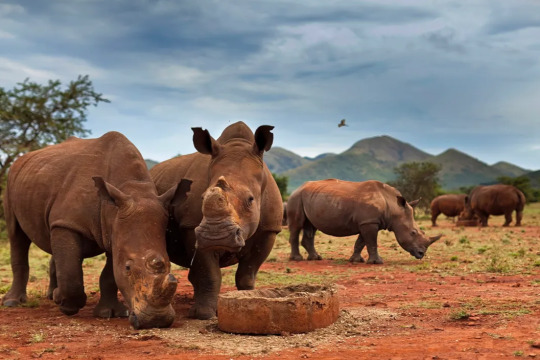
“The 2,000 rhinos - more than are currently found in any single wild location in Africa - represent around 12-15% of the continent’s remaining white rhino population. […] “Rhinos perform an important ecological function in the environment as a large grazing herbivore,” says Dale Wepener[….] “The protection of rhino is far more than just looking after rhino; other species that occur in the protected areas will benefit from the protection,” explains Jooste. “This will lead to an increase in diversity and result in much healthier ecosystems.”
2. Florida Corridor Buffers Effects of Climate Change on Wildlife — And People
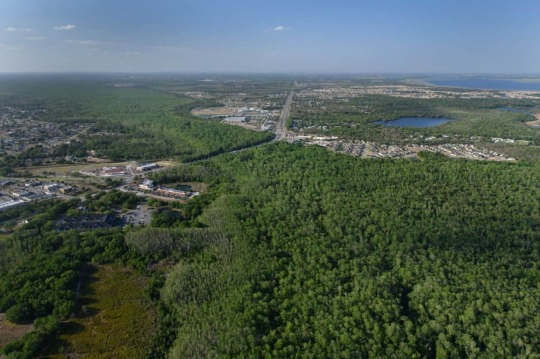
“A massive multi-partner effort that has conserved 10 million acres for wildlife in Florida over past decades will help buffer wildlife—and people—from the effects of climate change, a new report says. […] Protecting these corridors is important for wildlife genetics, demography and connectivity […], conducting prescribed fires in the corridor can reduce the risk of more intense wildfires [… and] they can provide buffers against hurricanes and seasonal thunderstorms.”
3. Global life expectancy to increase by nearly 5 years by 2050 despite geopolitical, metabolic, and environmental threats
“Increases are expected to be largest in countries where life expectancy is lower, contributing to a convergence of increased life expectancy across geographies. The trend is largely driven by public health measures that have prevented and improved survival rates from cardiovascular diseases, COVID-19, and a range of communicable, maternal, neonatal, and nutritional diseases (CMNNs).”
4. Valencia has Spain’s longest urban park

“Jardin del Turia (Turia Garden) is the green spine of the City of Valencia and Spain’s (and possibly Europe’s) longest urban park stretching for a length of 8.5 kilometres [… and] the current administration plans to make Jardin del Turia Europe’s largest city green space by extending it to the sea[….] Almost all Valencia residents (97 per cent) live within 300 metres of an urban green space. […] Jardin del Turia is a true urban oasis that provides exceptional thermal comfort, with a temperature difference of up to three degrees compared to other areas of the city.”
5. This Paint Could Clean Both Itself and the Air
“When an artificial ultraviolet light source shines on [photocatalytic] paint, the nanoparticles react with pollutants to make them break down—theoretically removing them from the nearby air and preventing a discoloring buildup. [… R]esearchers developed a new photocatalytic paint that they claim works using UV rays from ordinary sunlight, making its self-cleaning properties easier to activate. They’ve also shown that they can effectively produce this paint from recycled materials [including fallen leaves].”
6. Planting Seedlings for a Cooler Rockingham
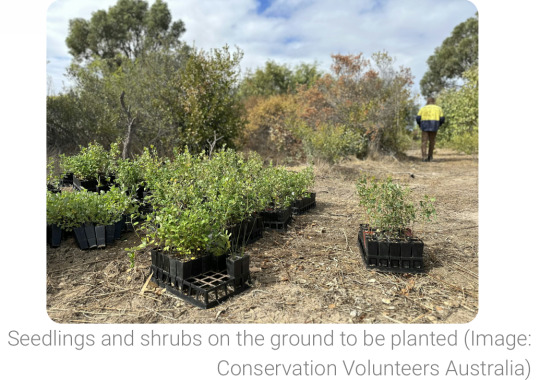
“A dedicated group of volunteers recently planted over a thousand native seedlings in Lewington Reserve [… and] re-established canopy cover to areas of the reserve to create cooling shade for the local community and provide homes for native wildlife. […] Planting lots of trees and shrubs in urban areas can help create shade and cool cities, mitigating the impacts of climate change, contributing to biodiversity conservation and building greener, more resilient communities.”
7. Sydney’s first dedicated affordable housing for trans women designed to deliver ‘positive outcomes’
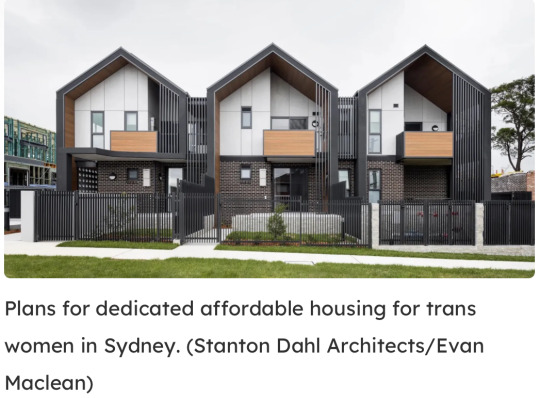
“Community housing provider and charity Common Equity NSW, […] which is for people on very low to moderate incomes, prides itself on creating inclusive living and promotes the independence and well-being of people and communities […, and] will deliver the first-of-its-kind social housing in a bid to provide a safe place to live for transgender women seeking an affordable home.”
8. Rewilding: How a herd of bison reintroduced to Romania is helping ‘supercharge’ carbon removal

“170 European Bison reintroduced to Romania’s Țarcu mountains could help capture and store the carbon released by up to 84,000 average US petrol cars each year. […] By grazing a 48 square kilometre area of grassland in a wider landscape of 300 kilometres squared, they helped to capture an additional 54,000 tonnes of carbon each year. That is around 10 times the amount that would be captured by the ecosystem without the bison.”
9. World’s biggest grids could be powered by renewables, with little or no storage
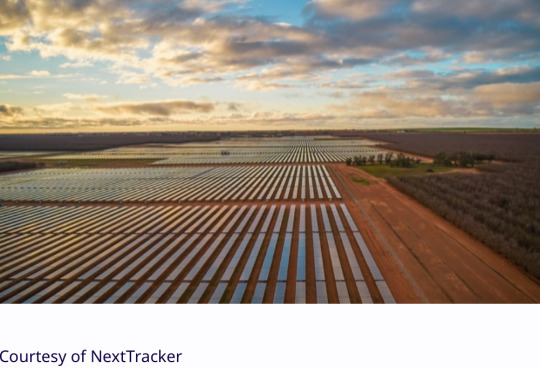
“[…] 100% renewable supply can then match the load by putting surplus electricity into two kinds of distributed storage worth that [an energy expert] says are worth buying anyway – ice-storage air-conditioning and smart bidirectional charging of electric cars, and recover that energy when needed, filling the last gaps with unobtrusively flexible demand.”
10. Supporting the Long-Term Survival of Copper River Salmon and Alaska Native Traditions
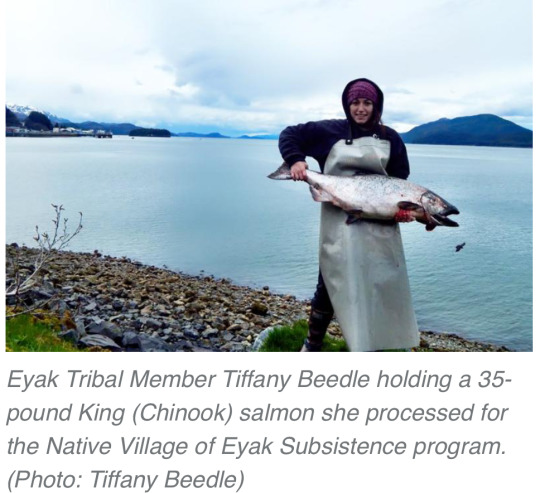
“With $4.3 million in NOAA funds, the Copper River Watershed Project and The Eyak Corporation will remove fish passage barriers, opening more streams for salmon spawning and subsistence fishing. [… As part of this effort, o]ld narrow culverts that constrict water flow will be replaced with “stream simulation” culverts wide enough to fit the full stream, including its banks. They are also deep to allow contractors to place stones and other material inside to mimic a natural stream bottom.”
May 8-14 news here | (all credit for images and written material can be found at the source linked; I don’t claim credit for anything but curating.)
#hopepunk#good news#rhino#white rhino#africa#conservation#rewilding#climate change#florida#wildlife#life expectancy#health#spain#green space#urban parks#recycling#trees#global warming#trans#affordable housing#australia#bison#romania#carbon#carbon capture#renewableenergy#reforestation#salmon#alaska native#nature
390 notes
·
View notes
Text
Habitat destruction is the leading cause of species endangerment and extinction. It can take decades, if not centuries, for a habitat to return to a point where it supports a given species' needs. Normally in nature there are enough other areas of habitat to keep species going while the damaged place recovers. However, we've wrought so much extensive destruction on ecosystems worldwide--whether directly, or through the effects of climate change and pollution--that many wild beings are forced into tiny pockets of their former range, making them vulnerable to extinction.
Anything we can do to provide appropriate habitat gives a threatened species a chance to hang on. It requires knowing what that being needs, and coming up with creative solutions. In this case, understanding what conditions the greater glider requires to thrive helped scientists create artificial shelters for them in the wake of devastating wildfires that destroyed a third of their habitat.
We're a long way from undoing the ecological harm we've done, and there's a lot of work to do. But every species we can protect from extinction is one more piece of the ecosystems we need to help recover. Ideally the forests that the gliders need will once again be widespread in the future, but for now these boxes will help keep the population going until conditions improve.
#greater gliders#gliders#wildlife#marsupials#Australia#nature#animals#ecology#environment#science#conservation#scicomm#endangered species#extinction#animal welfare#climate change#global warming#habitat restoration#restoration ecology#good news
188 notes
·
View notes
Text
"Until recently, a visit to the Colorado River’s delta, below Morelos Dam, would be met with a mostly dry barren desert sprinkled with salt cedar and other undesirable invasive plant species. Today, that arid landscape is broken up with large areas of healthy riparian habitat filled with cottonwood, willow, and mesquite trees. These are restoration sites which are stewarded through binational agreements between the United States and Mexico, and implemented by Raise the River—a coalition of NGOs including Audubon"
Thanks to @aersidhe for sending this in!
#submission#bird conservation#river conservation#wildlife#biodiversity#conservation#environment#good news#hope#ecosystem#habitat#habitat restoration#river restoration#climate change#global warming
2K notes
·
View notes
Text







🤎🦛🤎
#moo deng#haggis#baby hippo#pygmy hippo#hippopotamus#viral#meme#global icon#Royal Zoological Society of Scotland#edinburgh zoo#endangered species#international union for conservation of nature#wildlife#habitat loss#awareness#wildlife conservation#zoo#edinburgh#animals#save wildlife
21 notes
·
View notes
Text
#acadia national park#apex predator#biodiversity#birds#candice gaukel andrews#climate change#conservation#covid 19#ecotravel#environment#glacier national park#global warming#human-wildlife conflict#mammals#national parks#natural habitat adventures#nathab#natural habitats#nature#red fox#science#science and environment#scientific research#trails#us national parks#wild#wildlife#wildlife corridors#world wildlife fund#wwf
118 notes
·
View notes
Text
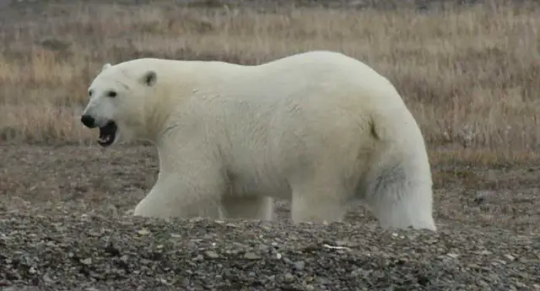
As Arctic sea ice melts away, so does the polar bear's food supply.
#Polar bear#Coningham Bay#Prince of Wales Island#Nunavut#Canadian Arctic#wildlife#global warming#habitat#predation#climate change#ecology#nature photo#conservation#NWT
23 notes
·
View notes
Text
i saw leatherback turtles nesting tonight, and it reminded me that the earth is dying.
but instead of the usual thought process “nothing matters, give up” i found the opposite to be true. everything matters. every little thing.
and we have to fight for it.

because this?
this matters.
2 notes
·
View notes
Text
In a beautiful meadow filled with wildflowers and birdsong, a man of late middle age wearing a faded camouflage sun hat knelt beside a clump of clover and prepared to break the law. Martin White removed a carrier bag from his battered rucksack and began quickly opening the lids of dozens of matchbox-sized pots. As he shook each pot, a flake of brilliant blue fluttered free. Over the course of about five minutes, White released 72 mazarine blues, a small butterfly named after the striking colour used in 17th-century porcelain. For the first time in more than a century, this rare insect took to the skies of Britain.
One by one, the butterflies spread out on the pink clover. Some flashed silver-blue as they zigzagged across the meadow. White watched closely. A darker-coloured female curled its abdomen around a clover flower. “She’s dossing an egg off,” he murmured. The butterfly placed tiny white pinheads inside the flower. Satisfaction spread across White’s face for a second. Then he scanned the dark woods beyond the meadow.
“I’d be worried if someone came out of there,” he said, pointing to the distant trees. “But I’d pick up my bag, amble off, and they probably wouldn’t notice a thing.” It was against the law to release a species here, an area designated as a site of special scientific interest. What if White was caught and prosecuted? “There would be an immense public outcry,” he told me in his blunt Nottinghamshire accent. “I would be an instant martyr, and that’s the last thing they want me to be.”
“They” are the government agencies, scientists and charities who for 70 years have decided how nature should be protected in Britain. These illustrious groups and experts have tried to save wild places and stop the loss of species. They’ve scored some notable successes – once-endangered species such as peregrine falcons have been revived and the Wildlife Trusts alone have created more nature reserves than there are branches of McDonald’s – but, broadly speaking, they’ve failed. Britain has lost more of its nature than most other countries in the world. Almost every species or measurable wild habitat produces a graph plummeting downwards.
Over the last 70 years, 98% of wildflower meadows in England and Wales have been destroyed; three-quarters of ponds and heaths have vanished; half the remaining fragments of ancient woods have been obliterated. The creatures inside this habitat have gone too: since 1970, more than half of Britain’s farmland birds have disappeared, while a quarter of mammals are endangered and three-quarters of butterfly species have declined. Overall one in 10 species are threatened with extinction; 500 species have already disappeared from England. Most alarmingly, this dramatic loss of biodiversity has accelerated in the last decade. During the same period, government funding for British wildlife and the environment has been cut by 30%.
Can one individual do anything about an extinction crisis caused by the way we live, farm and build? White is doing something. For almost all of his 61 years, he has laboured mostly alone; for the last 10 years, he has been breeding native butterflies from his modest terraced house in the East Midlands for release across the country. He is part of a small, scattered band of secret breeders – or “introductionists” as they prefer – who have taken it on themselves to bring back wild species that have fallen victim to what one nature writer calls “the great thinning” of non-human life.
White and his peers have quietly released captive-bred wild animals that were once commonplace in Britain: beavers, turtle doves, butterflies, even glow-worms. One introductionist I spoke to, Graham Wellstead, has released hundreds of polecats into the English countryside, helping this once-persecuted small carnivore spread across the south and east of the country once again. Another man’s captive-breeding programme has revived the endangered sand lizard.
The introductionists are not feted. To the conservation establishment, these men – and it is overwhelmingly men – are not allies, but pests, who do more harm than good. Professional conservationists complain that unsanctioned reintroductions mess up their data. If conservation scientists can’t accurately measure whether a wild population is increasing or falling, they can’t understand what’s causing a decline or take steps to stop it. Releasing a captive-bred water vole into the wild won’t save that creature if the marshland where it lives has been drained; releasing a swift won’t save the species if air pollution has removed the insects on which it fed.
Conservation organisations in the UK tend to focus not on saving individual species, but on saving habitats. Conservationists act slowly because they must bring people with them, while maverick releases are more likely to antagonise. Illegally releasing a beaver on to a Scottish river, say, which then floods farmers’ fields, leads to the persecution of that species. No one wins. Professional conservationists disparage White’s work. “I’m just seen as an interloper, an attention-seeker. They called me a ‘schoolboy introductionist’ until recently,” he said. “Anything to undermine what I’m doing.”
White believes introductionists face such opprobrium because they challenge the power of the establishment. But, according to White, public opinion – suspicious of experts, hungry for change – is on their side. Besides, he said: “I’ve been releasing butterflies since I was eight years old. I can’t stop now.”
#environmentalism#ecology#climate change#global warming#wildlife conservation#animals#insects#butterflies#beavers#britain#england
3 notes
·
View notes
Text
#sustainable#environmental justice#south pacific#pacific islander#pacific islanders#climate activism#climate heal#climate action#global boiling#oceans#sea life#sealovers#ocean warming#coral#water is life#water#ocean conservation#wildlife
3 notes
·
View notes
Text
Thanks to @the-puffinry for the tag!
As an avid freediver since the age of 12, Allnutt remembers how his local coastline once was – full of lush kelp beds that brimmed with marine life. He used to dive near Hove in an area with kelp so dense that “you’d hardly see the rocks and mussel beds” beneath it. Now, he says, “it’s just disappeared”. Most of the UK’s kelp beds have been wiped out by destructive fishing practices such as bottom trawling that leave the seabeds scarred and barren. “We’ve taken so much out of the sea but we’ve not put anything back,” says Allnutt.
What kelp remains, he noticed, is resilient, and he began to wonder if a restoration project could simply “reboot the whole system”. When a new law in 2021 banned trawling in 200square kilometres of Sussex’s inshore waters, Allnutt was initially excited – but soon he realised that, although the areas were newly protected, the government had no actual restoration plans. If no one else would act, he figured, it was down to him.
He set up the tanks in his garage and planted them with kelp tissue he collected from freediving. To cover the cost of the equipment, he picked up extra shifts at the hospital where he works as a physical therapy technician with patients who have had knee and hip replacements. Later, he launched a crowdfunding scheme – called the Sussex Seabed Restoration Project – which has raised more than £3,000. Local restaurants even donated oyster shells for the kelp to grow on.
I found this fundraiser for a seabed restoration project just today, thought I'd share! you can still contribute.
youtube
#ocean restoration#kelp forest#ocean conservation#marine conservation#biodiversity#environment#kelp#wildlife#hope#good news#environmental grief#ecoanxiety#environmental despair#climate anxiety#global warming#climate change#hopepunk#rewildling#submission
5K notes
·
View notes
Text
Panel Discussions with Global Wildlife Fair
The Global Wildlife Fair, scheduled for October 10–12, 2025, in New Delhi, is set to host a series of panel discussions focusing on critical aspects of wildlife conservation, ecotourism, and sustainable development. These sessions aim to inform, inspire, and foster a deeper understanding of pressing environmental issues.

Conservation - Corridors & Habitats: This panel will explore strategies for creating safe pathways that allow elephants and other species to roam freely within their natural environments.
- Current Conservation Status: Experts will provide insights into the present state of conservation efforts for majestic creatures, highlighting successes and areas needing attention.
- Threats to Survival: A discussion on the challenges and threats that jeopardize the survival of key species, including poaching, habitat loss, and climate change.
- Global Efforts and Collaboration: Emphasizing the importance of international cooperation in safeguarding wildlife for future generations.
- The Role of Local Communities: Highlighting how empowering local communities can lead to effective guardianship of surrounding wildlife.
- What You Can Do to Help: Offering practical advice on how individuals can contribute to conservation efforts.
Rural Communities and Wildlife Habitats - Community-Led Conservation: Celebrating initiatives where rural communities lead conservation efforts, showcasing successful models and best practices.
- Challenges of Coexistence: Exploring the complexities and solutions for humans and wildlife living in close proximity in rural settings.
- Economic Benefits of Conservation: Discussing how protecting wildlife can bring economic prosperity to rural areas through ecotourism and sustainable practices.
- Future of Rural-Wildlife Relationships: Envisioning a harmonious future where rural communities and wildlife thrive together.
Water-Based Landscapes and Flyways
- The Vital Role of Water Landscapes: Recognizing the essential role that aquatic ecosystems play in supporting biodiversity.
- Understanding Flyways: Mapping and understanding the migratory routes of species and their ecological significance.
- Biodiversity Hotspots: Identifying and exploring water-based landscapes that serve as critical zones for species diversity.
- Threats to Water Habitats and Flyways: Addressing dangers such as pollution, climate change, and human encroachment that threaten these vital ecosystems.
- Global Impact of Flyways: Understanding how migratory routes connect ecosystems across the globe and the implications for conservation.
- Cross-Border Collaboration: Highlighting the necessity of international cooperation in managing and protecting migratory pathways.
- Innovative Restoration Techniques: Showcasing methods being used to restore degraded aquatic habitats.
- Citizen Science Initiatives: Demonstrating how public participation contributes to monitoring and conserving flyways.
Education & Outreach - Empowering Future Generations: Strategies to inspire and educate young minds to become advocates for wildlife conservation.
- Interactive Learning: Engaging communities through hands-on experiences that promote conservation awareness.
- Digital Tools for Education: Utilizing technology to disseminate knowledge and raise awareness about wildlife conservation.
- Storytelling for Impact: Leveraging compelling narratives to drive conservation actions and change public perceptions.
- Community-Driven Programs: Highlighting successful grassroots initiatives that have made significant conservation impacts.
These panel discussions, and more, at the Global Wildlife Fair aim to provide a comprehensive platform for knowledge exchange, collaboration, and inspiration, driving forward the global agenda for wildlife conservation and sustainable development.
#Benefits of attending the Global Wildlife Fair#ecotourism event#global wildlife fair#global wildlife conservation#wildlife exhibition#animal conservation#sustainable tourism#world wildlife conservation#ecotourism networking event
0 notes
Text
I’m not sure how reliably I’ll be able to keep up with it, but I’ve been wanting to start posting weekly or monthly Good News compilations, with a focus on ecology but also some health and human rights type stuff. I’ll try to keep the sources recent (like from within the last week or month, whichever it happens to be), but sometimes original dates are hard to find. Also, all credit for images and written material can be found at the source linked; I don’t claim credit for anything but curating.
Anyway, here’s some good news from the first week of March!
1. Mexican Wolf Population Grows for Eighth Consecutive Year
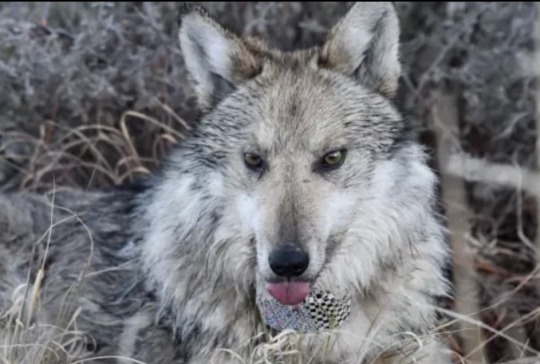
““In total, 99 pups carefully selected for their genetic value have been placed in 40 wild dens since 2016, and some of these fosters have produced litters of their own. While recovery is in the future, examining the last decade of data certainly provides optimism that recovery will be achieved.””
2. “Remarkable achievement:” Victoria solar farm reaches full power ahead of schedule
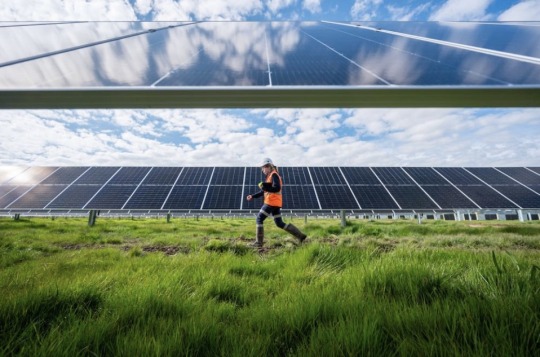
“The 130MW Glenrowan solar farm in Victoria has knocked out another milestone, reaching full power and completing final grid connection testing just months after achieving first generation in late November.”
3. UTEP scientists capture first known photographs of tropical bird long thought lost
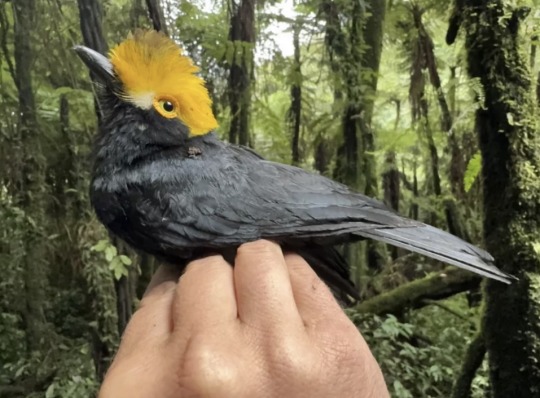
“The yellow-crested helmetshrike is a rare bird species endemic to Africa that had been listed as “lost” by the American Bird Conservancy when it hadn’t been seen in nearly two decades. Until now.”
4. France Protects Abortion as a 'Guaranteed Freedom' in Constitution
“[A]t a special congress in Versailles, France’s parliament voted by an overwhelming majority to add the freedom to have an abortion to the country’s constitution. Though abortion has been legal in France since 1975, the historic move aims to establish a safeguard in the face of global attacks on abortion access and sexual and reproductive health rights.”
5. [Fish & Wildlife] Service Approves Conservation Agreement for Six Aquatic Species in the Trinity River Basin

“Besides conserving the six species in the CCAA, activities implemented in this agreement will also improve the water quality and natural flows of rivers for the benefit of rural and urban communities dependent on these water sources.”
6. Reforestation offset the effects of global warming in the southeastern United States

“In America’s southeast, except for most of Florida and Virginia, “temperatures have flatlined, or even cooled,” due to reforestation, even as most of the world has grown warmer, reports The Guardian.”
7. Places across the U.S. are testing no-strings cash as part of the social safety net
“Cash aid without conditions was considered a radical idea before the pandemic. But early results from a program in Stockton, Calif., showed promise. Then interest exploded after it became clear how much COVID stimulus checks and emergency rental payments had helped people. The U.S. Census Bureau found that an expanded child tax credit cut child poverty in half.”
8. The Road to Recovery for the Florida Golden Aster: Why We Should Care
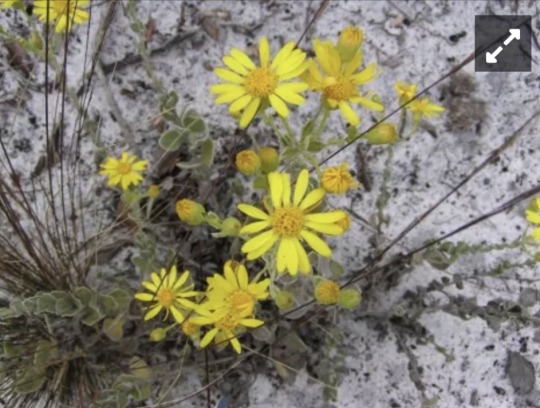
“After a five-year review conducted in 2009 recommended reclassifying the species to threatened, the Florida golden aster was proposed for removal from the Federal List of Endangered and Threatened Plants due to recovery in June 2021, indicating the threats to the species had been reduced or eliminated.”
9. A smart molecule beats the mutation behind most pancreatic cancer
“Researchers have designed a candidate drug that could help make pancreatic cancer, which is almost always fatal, a treatable, perhaps even curable, condition.”
10. Nurses’ union at Austin’s Ascension Seton Medical Center ratifies historic first contract
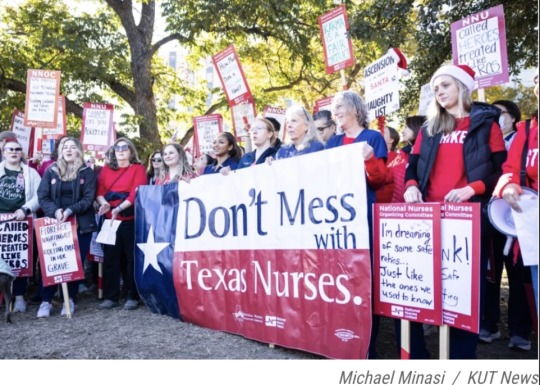
“The contract, which NNOC said in a news release was “overwhelmingly” voted through by the union, includes provisions the union believes will improve patient care and retention of nurses.”
This and future editions will also be going up on my new Ko-fi, where you can support my art and get doodled phone wallpapers! EDIT: Actually, I can't find any indication that curating links like this is allowed on Ko-fi, so to play it safe I'll stick to just posting here on Tumblr. BUT, you can still support me over on Ko-fi if you want to see my Good News compilations continue!
#hopepunk#good news#wolf#wolves#mexican wolf#conservation#solar#solar power#birds#abortion#healthcare#abortion rights#reproductive rights#reproductive health#fish and wildlife#turtles#alligator snapping turtle#snapping turtle#river#reforestation#global warming#climate change#climate solutions#poverty#social safety net#flowers#endangered species#cancer#science#union
16 notes
·
View notes
Text
This ties into one of the big conundrums of restoration ecology. When trying to decide what plants to add to a restoration site, should we add those that are there now, even if some of those species are increasingly stressed by the effects of climate change? Or do we start importing native species in adjacent ecoregions that are more tolerant of heat?
Animals can migrate relatively quickly, but plants take longer to expand their range, and the animals that they have mutual relationships with may be moving to cooler areas faster than the plants can follow. Whether the animals will be able to survive in their new range without their plant partners is another question, and that is an argument in favor of trying to help the plants keep up with them. We're not just having to think about what effects climate change will have next summer, but also predict what it's going to look like here in fifty years, a hundred, or beyond. It's an especially important question in regards to slow-growing trees which may not reproduce until they are several years old, and which can take decades to really be a significant support of their local ecosystem.
For example, here in the Pacific Northwest west of the Cascades, western red cedar (Thuja plicata) is experiencing increased die-off due to longer, hotter summer droughts. Do we continue to plant western red cedar, in the hopes that some of them may display greater tolerance to drought and heat? Or do we instead plant Port Orford cedar (Chamaecyparis lawsoniana), which is found in red cedar's southern range, and which may be more drought-tolerant, even though it's not found this far north yet?
Planting something from an adjacent ecoregion isn't the same as grabbing a plant from halfway around the world and establishing it as an invasive species. But there is the question as to whether the established native would have been able to survive if we hadn't introduced a competing "neighbor" species. Would the Port Orford cedars and western red cedars be able to coexist as they do in northern California and southern Oregon, or would the introduced Port Orfords be enough to push the already stressed red cedars over the edge to extirpation?
There's no simple answer. But I am glad to see the government at least allowing some leeway for those ecologists who are desperately trying any tactic they can to save rare species from extinction.
#restoration ecology#ecology#habitat restoration#climate change#global warming#anthropogenic climate change#nature#wildlife#plants#botany#trees#endangered species#extinction#environment#conservation#environmentalism#science#scicomm#science communication
2K notes
·
View notes
Link
“There’s a huge untapped potential to consider conserving animals as a climate solution. If you do some of the rough calculations, the numbers rival those of what the IPCC is right now promoting in terms of converting everything to solar or wind generation...the numbers are in the same ballpark”
This is called called “trophic rewilding”--many animal species naturally cycle carbon into the soil just by living their lives and restoring these species to their natural range can turn their ecosystems back into carbon sinks.
“Fortunately, we have the technology to scrub CO2 from the atmosphere. It’s called nature.”
Looking at the list of environmental issues--pollution, climate change, species extinction, etc.--can feel overwhelming, but the reality is that nearly all of these issues are intimately connected. This is just one of many examples of how working on one issue also helps solve the others; if you conserve wildlife and restore habitat it also helps mitigate climate change.
(quotes from Oswald Schmitz)
#rewilding#wildlife#trophic rewilding#climate change#global warming#environment#hope#good news#animals#conservation#biodiversity#ecosystems#habitat#habitat restoration#hopepunk#postivity#ecoanxiety#climate anxiety#environmental despair#environmental grief
894 notes
·
View notes
Text
@BenAdrienProulx September 2nd, 2024.
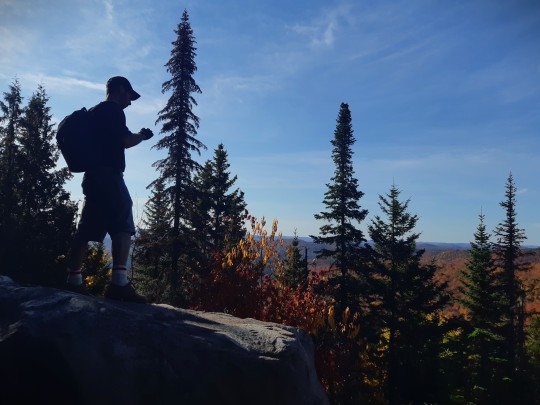

#RelocationTime
Mountainous Parts of the Northern Hemisphere.
#Relocation Time#GPS#Global Positioning System#Mohawk Territory#Traditional Homeland#Red Power Movements#Wilderness Need Protection#IUCN#International Union for Conservation of Nature#ECCC#Environment and Climate Change Canada#NCC#Nature Conservancy of Canada#Raw Nature#Nature Photography#Nature Canada#Wildlife Photography#Mountainous Parts of the Northern Hemisphere#Canada#Mohawk Native Reserve#The RavenKeeper
516 notes
·
View notes